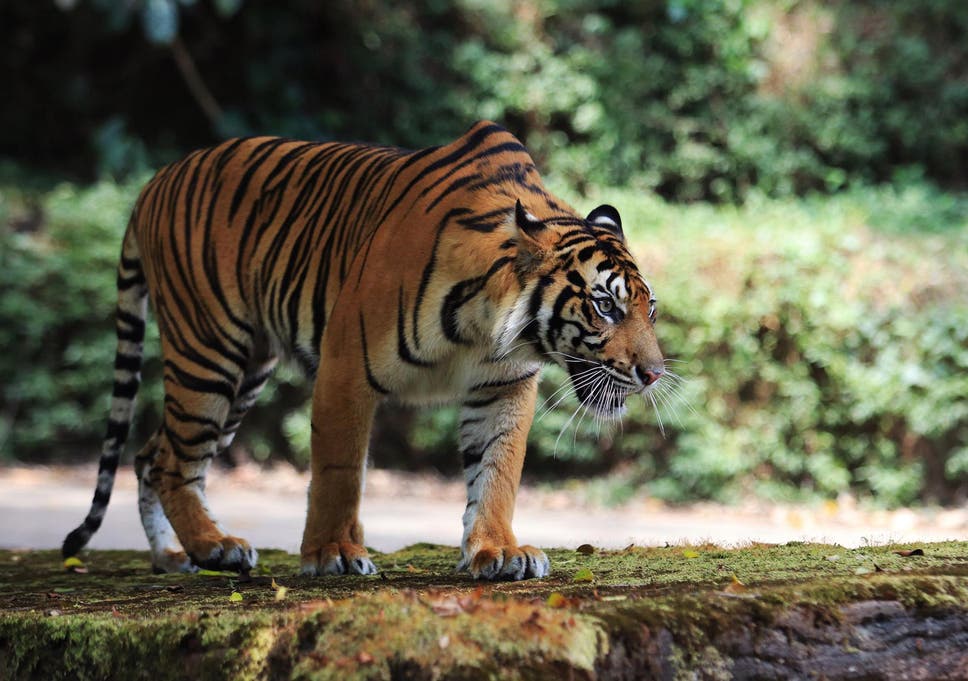
The Amrabad Tiger Reserve, spanning more than 2,800sq km of verdant jungle in India’s southern state of Telangana, is a paradise of biodiversity.
One of the biggest nature reserves in the country, it hosts not just India’s national animal but a range of other endangered species including pangolins, panthers, sloth bears, wild dogs, jungle cats, and spotted and sambar deer.
The Chenchu, one of India’s few remaining protected hunter-gatherer tribes, also count the Amrabad reserve as their ancestral home.
Yet this pristine forest has found itself at the centre of a clash between two conflicting national interests – the desire to protect India’s natural heritage, and the need to provide electricity to its ever-growing population.
Local activists and forestry officials are now up in arms after the central government in late May gave initial clearance for an exploratory uranium mining project in Amrabad Tiger Reserve, saying the proposal was “of critical importance from a national perspective”.
India is going nuclear. As he tries to very gradually wean the country off coal, Narendra Modi’s government is building new atomic energy reactors across the nation.
Mr Modi pledged under the Paris agreement that India would produce at least 40 per cent of its energy through non-fossil fuel means (which can include nuclear) by 2030. At the same time, it must meet the demands of a population more connected to the energy grid than ever before.
So while the country is still going to be reliant on coal for the foreseeable future, it is also dramatically ramping up its investments in nuclear, solar, wind and hydroelectric power.
At the annual budget presented by finance minister Nirmala Sitharaman last week, it was announced that custom duties will be waved on all imports of parts for new nuclear power plants.
There are currently 22 nuclear reactors operating across India, of which 14 rely on imported uranium. Plans are in place to expand that capacity to 32 reactors, with the additional 10 located at four sites in Rajasthan, Karnataka, Haryana and Madhya Pradesh. All are targeting completion by 2025.
At the same time, earlier this year the Indian foreign ministry announced an agreement with the US to establish six American-owned nuclear power plants in India.
A joint statement spelled out no further detail, but showed an intent to open up India’s nuclear energy market which, since it began its nuclear arms race with neighbouring Pakistan in 1998, has been cut off from international investment and trade.
All these plants need fuel, however, and while last week’s budget also cut duties on imported uranium, domestic production is always preferable to a Modi administration that has been pushing hard its “Make In India” policy.
Amrabad is one of 13 sites that have now received “in-principle” approval for uranium mining projects. The national Forest Advisory Committee gave its assent on 22 May for a proposal to carry out a survey and dig boreholes in areas that include the reserve’s “core” blocks for tiger protection.
In documents supporting its proposal, the Department of Atomic Energy (DAE) noted that India’s existing discovered reserves of uranium were “either of low grade or low tonnage or both”, and that finding new sources of high-grade uranium was essential to meet the country’s growing demand.
“To sustain [India’s] high economic growth, uranium metal has become a critical and immediately needed commodity,” the proposal said.
The department must now submit a detailed proposal that gives exact locations for digging to begin, but the granting of initial approval has alarmed local experts, many of whom submitted reports urging against the project.
Telangana’s principal chief conservator of forests, PK Jha, told the Indian Express he would not allow anyone to drill inside Amrabad unless express permission was granted by the National Tiger Conservation Authority (NTCA). “We did not allow it till now though the proposal is two or three years old,” he said.
Imran Siddiqui, co-founder of the Hyderabad Tiger Conservation Society, wrote in a blog post that he and other activists had been successfully fighting off various mining projects in Amrabad for decades.
He said the combined effects of building roads to bring in mining equipment, the digging itself and the potential for water contamination “seem poised to destroy the ecology of the entire tiger reserve”.
“If India’s largest tiger reserves are not sacrosanct then the future of the tiger is really bleak in the new India we are making,” he said.
In his report to the Forest Advisory Committee, the reserve’s field director said that after years of conservation work, tiger movement had been spotted in key protected corridors between habitats.
“If the mining activity is permitted, it will cause habitat fragmentation and disturbance to wildlife resulting in wastage of all efforts made over the years to restore wildlife and improve habitat in the core area,” he said.
The NTCA, which was responsible for administering India’s much-lauded Project Tiger conservation effort, and the Telangana government are yet to take a position on the Amrabad project.
But Rajesh Gopal, a former member secretary of the NTCA, said he appreciated the delicate balance that India needs to strike.
“Like any other developing country, India has the challenge of ensuring conservation with development. Certainly, one is not a drag on the other,” he told Mongabay-India.
“But certain areas provide ecosystem services and are the repository of the [tiger] gene pool as well,” he added. “We need to safeguard them.”







